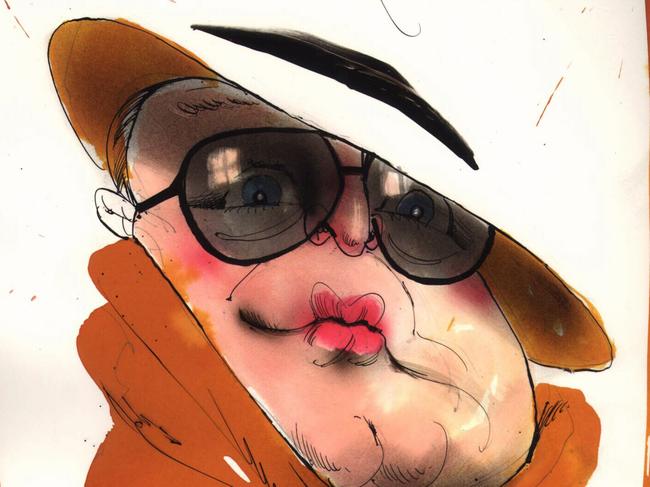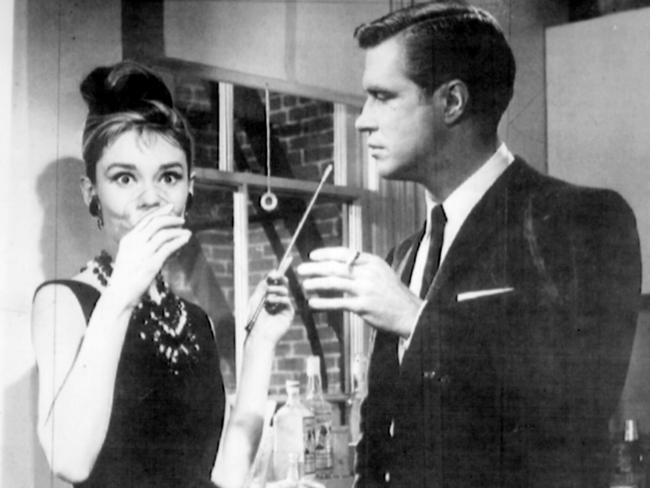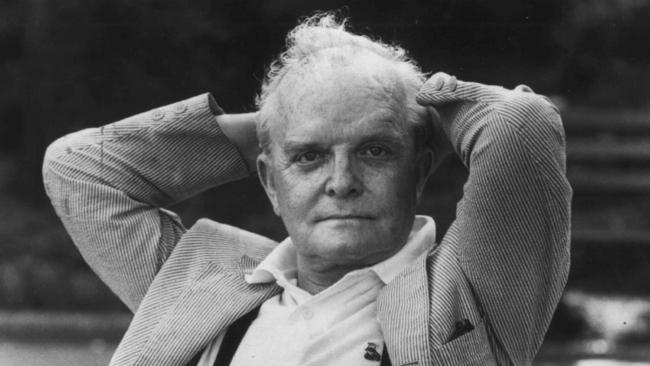America’s most poisonous pen
Truman Capote got what he wanted, and it killed him.

Truman Capote was a mix of confidence, honesty, ego and outrage – usually all at once. In his last book he wrote: “I’m an alcoholic. I’m a drug addict. I’m homosexual. I’m a genius.” He also insisted that he was not a saint. Not yet.
Capote had friends, but many people hated him quite naturally; often Capote had to train others to do so.
He had towering feuds with famous authors that outlived him. Gore Vidal said that, during an interview once, he had been bothered by a fly that annoyingly circled his head whenever he was about to speak. Finally, the fly piped up in a squeaky voice “Help, help me”.
“It was Truman Capote!” thundered Vidal of his long-dead rival.
Another time, Vidal said he had misplaced his glasses and so made his way to a corner to sit on what he thought was an overstuffed ottoman. “It was Capote!”
Capote didn’t take that sitting down: “I’m always sad about Gore – very sad that he has to breathe every day.”

Capote was a small man destined for a big, short life. A piccolo person, as a child he was dressed to look like a man; as an adult he acted and sounded as if he were a child – his oddly aspirated, high-pitched, Alabama-tuned speech made him sound as if he were vaping helium.
He had turned up in the original baby boom that followed the end of World War I. So too his great contemporaries, the tyrannical narcissists and bitching rivals, Norman Mailer and Vidal.
One hundred years ago on Monday, Capote was born in Louisiana, a day before future president Jimmy Carter. Capote has been gone more than 40 years; centenarian Carter hopes to be voting for Kamala Harris when polls open in his state next week.
There are fulfilling dividends to a long life and Carter, having been favoured with one, has written more books than Capote. But then, so too have most of those legendary post-war authors.
Like Mailer: He was a journalist, a novelist, filmmaker and playwright, and found time to marry six women – wife number two doing a runner after Mailer stabbed her – while fathering nine children.
Like Vidal: He once claimed to have had sex with 1000 men before he was 25, had a long-term partner and even a few heterosexual affairs, including Joanne Woodward, who then married Paul Newman. He wrote acclaimed historical novels often anchored in the big stories of America’s past, was a playwright, novelist, satirist, actor, would-be Democratic politician and public intellectual often goading conformist Americans, which led to lengthy feuds with Mailer and conservative commentator William F. Buckley. (Live on national television in 1968, Vidal dismissed Buckley as a crypto-Nazi. Buckley responded with venom: “Now listen, you queer … I’ll sock you in your goddamn face and you’ll stay plastered.”)

But after a busy start to life, Capote took his foot off the pedal and spent a decade with the New York ladies who lunch; he amused them with his wit and seamlessly articulate stories, and they gossiped with him as if he was their loveable, tame mascot. He later turned on his “swans”, as he called them, with a blistering essay in Esquire titled La Côte Basque 1965, in which he exposed the secrets of New York’s seriously rich, from whose ranks he was ever after excluded.
He was born in New Orleans to a teenage beauty queen, Lillie Mae Faulk, and ne’er do well scoundrel Arch Persons, whose flashy car and big talk convinced Lillie Mae that he was wealthy. He ran out of money a few days into their grand-touring honeymoon and the start-up social climber went back home realising her mistake and deciding to divorce the womanising counterfeit.
When she discovered she was pregnant to Persons she sought an abortion. But it was too late and Truman Streckfus Persons arrived, soon after being dispatched to Lillie Mae’s hardscrabble family in Monroeville, a poor, racially divided town in the middle of Alabama. There he lived with his sometimes fawning, often stern cousins, more than some of whom would be worked into his writings.
One, known as Nanny, he named Sook and she was central to one of his early stories, A Christmas Memory. Sook and Buddy (Capote as a boy) give each other kites they had made at Christmas. Flying them that afternoon, Sook believes such fulfilment is an insight to what heaven must be like. The story hinted that Sook was “simple”. Buddy thought her brilliant – even if she resisted adulthood. Soon she forgets Buddy’s name and then dies, perhaps the first time dementia had been presented in literature. Capote captured it brilliantly: “And when that happens, I know it. A message saying so merely confirms a piece of news some secret vein had already received, severing from me an irreplaceable part of myself, letting it loose like a kite on a broken string.”
As we would come to know, Capote’s words resonated with the unusual melodies in his head – and sometimes darker chimes.

His breakthrough book had been 1948’s Other Voices, Other Rooms, which he started after the war using an idea that came to him walking in the forest near Sook’s home. Partly reflecting his own circumstances, it is the story of an epicene boy whose mother dies. He is sent to live with his geographically and emotionally distant father who had abandoned him. The everyday unfolds among a rag tag of family and associates: the morose stepmother, a diminutive ageing former slave, the unseen father, a gay relative, a circus dwarf and an ill-tempered tomboy – mostly set in a gothic house, like some sad carnival.
The tomboy character, Idabel, was based on a Monroeville neighbour and boyhood friend, Nelle. Later we would know her as Harper Lee, author of To Kill A Mockingbird. Lee is pretty much the gamine Scout in her own book and she drew the character Dill Harris based on the Capote with whom she grew up. Capote once revealed that he had a near identical character to Boo Radley, the shy and mysterious oddball in Mockingbird, in an early draft of Other Voices. Some even believe he wrote Mockingbird; he didn’t – the Radley character was based on a daunting but friendly Monroeville neighbour they each remembered.
At the end of the 1950s, Capote wrote a short story of the unconventional New Yorkers who pass through the life of gregarious and popular but deeply unknowable Holly Golightly. Capote often taunted readers about on whom he had based Golightly – heiress Gloria Vanderbilt, actor Oona O’Neill or model Suzy Parker – but critics mostly accept it was likely socialite Marguerite Littman, who shared Capote’s accent. The film of it, starring Audrey

Hepburn, captured the essence of the novella, with liberal deviations, and meant the author had money, status and attention, for all of which he had high regard.
Even as a child, Capote wanted to become famous. Reunited with his mother, they moved to New York City and he applied to the prestigious Trinity School. Given an IQ test as an entrance exam, he scored 215, the highest in the school’s history. Capote said, “I was having 50 perceptions a minute to everyone else’s five. I always felt nobody was going to understand me, going to understand what I felt about things. I guess that’s why I started writing.”
The success of Breakfast At Tiffany’s also meant he could take time with his next work, a landmark book that would be his most famous; he billed In Cold Blood as a nonfiction novel and it would forever influence writing and journalism.
And Harper Lee would play a substantial role in it. A year after the publication of Breakfast At Tiffany’s, two former inmates – told in jail by a big-noting ranch-hand that well-to-do Kansas farmer Herbert Clutter kept a fortune in his safe – set out to rob him. They drove to the Clutter home, which looks like it might have been the backdrop to American Gothic, the iconic image of midwest rural life. There was no safe. On the night of November 14, 1959, the uneducated, entitled and witless Richard Hickock and Perry Smith woke the Clutters – Herb, wife Bonnie and teenage children Nancy and Kenyon – whose fates are sealed. The killers had agreed no witness would be left alive. Having found no safe, they slashed Herb’s throat and shot him, then shot the others in the head, in different rooms.

Not until the Manson Family killings a decade on was America so shaken.
On learning of the murders, Capote realised how deeply the country was reacting. He moved to the small town of Holcomb, literally in the middle of America, to begin investigations, accompanied by Lee, well before the killers were captured. Capote and Lee interviewed locals, detectives, relatives of those killed and their killers, looking especially into the families and debased lives of Hickock and Smith.
They spoke to thousands of people and wrote 8000 pages of notes as Capote tried to get a helicopter view of how a knot in humanity had betrayed a family of faith and quiet industry – unremarkable people so unlike himself. He looked into the soul of America and wrote of what he found in its darker corners.
Capote had the rules bent to interview Hickock and Smith in jail. Usually convicted murderers can correspond with and meet only direct family. Smith invited Capote to witness his execution. Capote declined. In Smith he saw, perhaps, redeeming features smothered in a sordid childhood of sex abuse. Smith told the author: “I thought that Mr Clutter was a very nice gentleman. I thought so right up to the moment that I cut his throat.”

The book was a masterpiece of reporting. There had been true crime before, but never like this. It had taken Capote six years and was released to universal acclaim shortly after the killers were hanged. It was the biggest-selling crime book until prosecutor Vincent Bugliosi wrote about Charles Manson.
Once Capote had been established by Other Voices, Other Rooms, Hollywood called to have him render other short stories of his – The Grass Harp and House of Flowers – into films. International sales of In Cold Blood set him up for the life he always imagined. He toured with the Rolling Stones, but never filed the story for which he was commissioned, had affairs with secretly gay captains of industry, and started and abandoned several books.
But he kept the long lunch appointments with his bevy of swans, filing away their anecdotes for a future “novel”. Magazine editor Babe Paley was one, of whom Capote said she “had one fault. She was perfect. Otherwise, she was perfect”. Also a swan was Jackie Kennedy’s sister, Lee Radziwill, and fashionistas Marella Agnelli, Gloria Guinness, actor and columnist Lucy Guest and Pamela Harriman, who married into the Churchill family, and was described by author Max Hastings as: “A world expert on rich men’s bedroom ceilings.”
Capote planned a book on them and offered Esquire its first chapter in 1975 with its sometimes specific, sometimes thinly veiled references to these women’s louche lives. Instantly exiled from it all, he drank more and increasingly experimented with drugs. “I’ll kill myself, without meaning to,” he told one radio interviewer.

He died on August 25, 1984, of “multiple drug intoxication” at the home of Johnny Carson’s former wife, Joanne. Vidal said it had been “a wise career move”. Joanne was given his ashes, which were twice stolen. Returned, in 1992 they were mixed with the ashes of his long-term partner, writer John Dunphy, and spread across Crooked Pond on New York’s Long Island. He was 59.


To join the conversation, please log in. Don't have an account? Register
Join the conversation, you are commenting as Logout